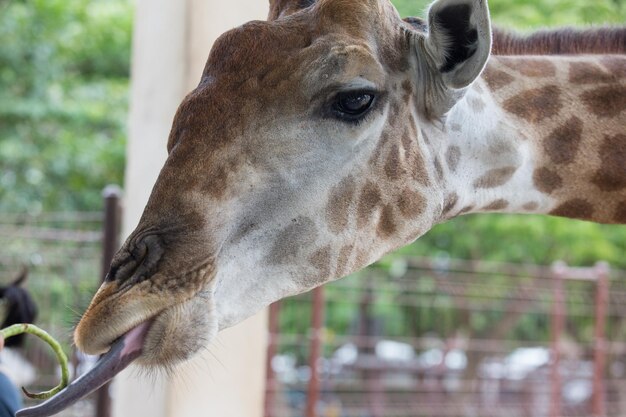How to Fit a Giraffe into a Refrigerator: A Fun Exploration of Logic and Imagination
Have you ever pondered the whimsical question of how one might fit a giraffe into a refrigerator? While it seems like a jest, many people enjoy this thought experiment as a way to encourage creative problem-solving and push the limits of conventional thinking. In this article, we will delve into the playful idea of squeezing a giraffe into a compact space, examining the implications, logical underpinnings, and broader concepts it represents.
A Curiosity That Sparks Creativity
This peculiar question—how to put a giraffe in a refrigerator—is part of a classic test of logic often used in interviews or team-building exercises. It encourages individuals to think beyond the literal and tap into their creativity to solve seemingly impossible problems. The absurdity of the task fuels the brain's ability to explore innovative solutions.
Why This Question Matters
- Promotes Out-of-the-Box Thinking: Engaging with such a strange proposition helps to break free from conventional paths.
- Encourages Lateral Thinking: Participants learn to approach problems from new angles.
- Creates a Light-Hearted Atmosphere: It eases tension and sets a friendly tone in otherwise serious environments like job interviews.
Examining the Approach: Logical Steps to an Illogical Question
While the exercise is intended to be humorous and imaginative, it's interesting to consider how one might approach it using logical steps. Here are common strategies participants might use in this imaginary scenario:
Step 1: Imagining the Possibilities
The first step is freeing your mind from the physical boundaries:
- Visualize a Giraffe-Sized Fridge: Imagine a refrigerator as big as necessary to accommodate the giraffe.
- Reduce the Giraffe Size: Picture the giraffe in miniature form, possibly using virtual reality or advanced shrinking technology—purely within the realms of imagination and storytelling, of course!
Step 2: Adapting the Space
Consider the logistics of modifying the available space:
- Flexible Refrigerator Concept: Think of a fridge with collapsible compartments for maximal space usage.
- Teleportation: A fanciful idea where the giraffe is transported via a fictional portal directly into the fridge's space.
Step 3: Maintaining the Comedy
A large part of this exercise is rooted in its humor:
- Playful Narration: Include stories where characters try to fit the giraffe, resulting in amusing failures.
- Cartoon Logic: Like in animated worlds, all laws of physics and practicality can be paused for comedic effect.
The Broader Implications of the Exercise
While it starts with humor, the giraffe-refrigerator scenario has deeper learning outcomes. Below, we explore how this fun exercise transitions into insightful outcomes in various settings.
Fostering Innovation
- Inventive Mindset: Encourages the kind of thinking that leads to actual innovations—just as a scientist dreaming may invent groundbreaking technology.
- Team Collaboration: By amusing everyone with such a scenario, it fosters bonding and teamwork, both essential for creative breakthroughs.
Psychological Perspective
From a psychological standpoint, engaging in this thought experiment can:
- Boost Self-Efficacy: As people navigate challenging but humorous scenarios, it increases their belief in their ability to handle unforeseen obstacles.
- Enhance Resilience: Humorous problem-solving provides mental breaks, promoting resilience in high-pressure scenarios.
Authoritative Yet Approachable Insights
Given the playful premise, it's worth noting that the approach to this question is less about literal instructions and more about mindset cultivation. Engaging with the question helps unfold real-life skills:
- Strategic Risk-Taking: Apply the 'try anything' attitude when realistic obstacles arise.
- Unconventional Learning: Understand that problems can teach something valuable, even through unexpected mediums like jokes or stories.
Practical Applications in Real Life
Though it's a humorous thought experiment, how, you may ask, might this apply in real contexts? Here's how you can adopt a giraffe-in-a-refrigerator mindset in everyday scenarios:
Problem-Solving Strategies
- Reframe Challenges: Approach each challenge as an opportunity to be creative rather than being stymied by it.
- Accept Absurdity: Embrace seemingly illogical methods that could lead to novel solutions.
Business Innovation
- Break Traditions: Encourage teams to devise solutions without the constraints of traditional boundaries.
- Prototype New Ideas: Use fantasy based on this exercise to design new business models or product ideas.
Personal Development
- Adopt Humor in Learning: Light-hearted scenarios make learning enjoyable and more effective.
- Boost Confidence: Tackling the ridiculous can build confidence, leading to enhanced performance in realistic endeavors.
Relatable Examples and Succinct Summary
To effectively convey the playful essence of this thought experiment, here is a quick highlight of how it can spark interest and nurture skills:
🔍 Key Insights:
- Encourages creative thinking and problem-solving.
- Teaches approachability in high-pressure scenarios.
- Promotes team building and management skill development.
- Cultivates a mindset where absurdity becomes a catalyst for real-world innovation.
Visual Summary: Key Takeaways for Daily Use
| 🚀 Innovation Trigger | 🌟 Creativity & Humor | 🤝 Team Dynamics |
|---|---|---|
| Inspire boundary-pushing ideas | Use humor to unlock creativity | Enhance collaboration among peers |
| Break traditional problem-solving molds | Find amusement in challenges | Develop interpersonal communication |
Closing Insights of Empowerment
Though ostensibly ludicrous, the "How to Put a Giraffe in a Refrigerator" scenario is valuable far beyond its humor. It's a light-hearted reminder that creativity often comes cloaked in humor, innovation sometimes wears whimsical costumes, and the unexpected is merely an opportunity waiting in disguise. By embracing imaginative thought experiments, we not only satisfy curiosity but also energize our abilities to think critically, adaptively, and innovatively. Whether this playful puzzle serves as an icebreaker or a thoughtful mental exploration, it stands as a testament to the power of imagination and the joys of exploring the improbable.
